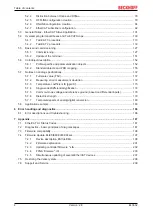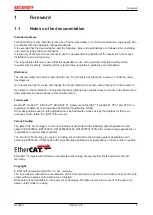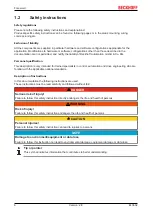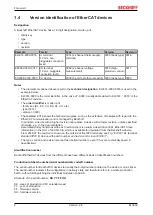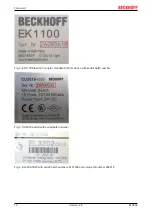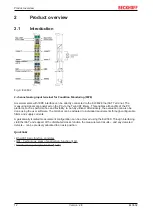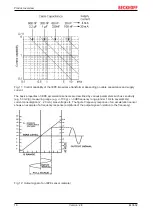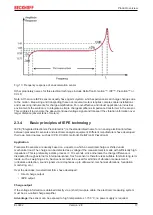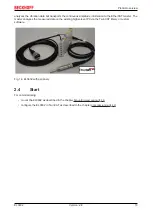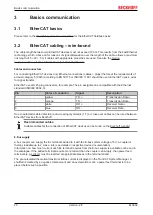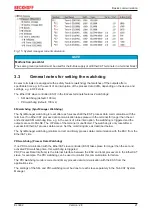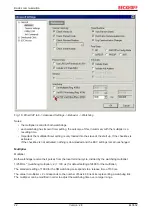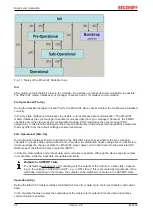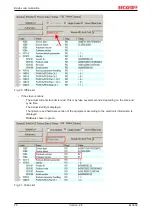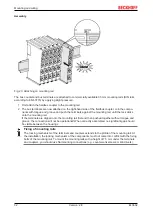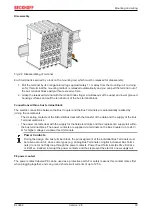
Product overview
EL3632
18
Version: 2.8
Disadvantage:
very sensitive to external influences on the line; elaborate receiving electronics and cable
due to high source impedance.
IEPE output
Since the load interface is not generally accepted for industrial applications, a more robust transfer method
was sought at an early stage. To this end, IEPE integrates a FET component directly in the sensor.
If this sensor is supplied with constant current between 2 and 8 mA (DC) via the two-pole cable, the resulting
bias voltage is approx. 8 to 15 V. If the sensor is now subjected to an accelerating force, the FET changes its
internal resistance by the present voltage on its gate. Since the outer constant current source tries to
maintain its current, the bias voltage changes within a range of several volts, according to the mechanical
load. Although the evaluation unit has to supply the DC current, it can derive the vibration acceleration from
the back-measured voltage, even over longer distances.
Advantage:
robust system, which is suitable for installation in industrial conditions.
Disadvantage:
upper temperature limit for the sensor 150 to 200 °C, smaller dynamic range.
Notes on constant current
• The higher the feed current, the more the vibration sensor heats up. This can be disadvantageous.
Note the information provided by the sensor manufacturer.
• The higher the feed current, the higher the maximum transferable signal frequency, since the charge
supply/discharge can be handled more quickly on the cable.
• The higher the supply current, the higher the resulting bias voltage. As a result, the transfer may
become more robust against electromagnetic influence, but on the other hand large positive
amplitudes may enter the upper saturation.
Notes on the IEPE measuring device
• In some IEPE measuring devices the supply current can be switched off (0 mA), so that they can be
used for voltage measurements. Cf. for example Beckhoff ELM3604
• Since normally only AC signals are of interest in the vibration range, IEPE evaluations have an
electrical high-pass > 10 Hz on the input side. Depending on the application e.g. slow tower vibrations,
the limit of this high-pass may be relevant. Cf. for example the configurable high-pass of the ELM3604,
which can be switched off.
• The bias voltage is suitable for detection of wire breakage/short circuit. E.g. see also ELM3604
diagnostics options.
2.3.5
Beckhoff EL3632
A suitable measuring transducer is the EL3632 with two independent channels, each with an integrated and
separately configurable current source, integrated high-pass filter, separately parameterisable analog filter
for signal processing and parameterisable sampling rate/oversampling factor. The EL3632 does not pre-

